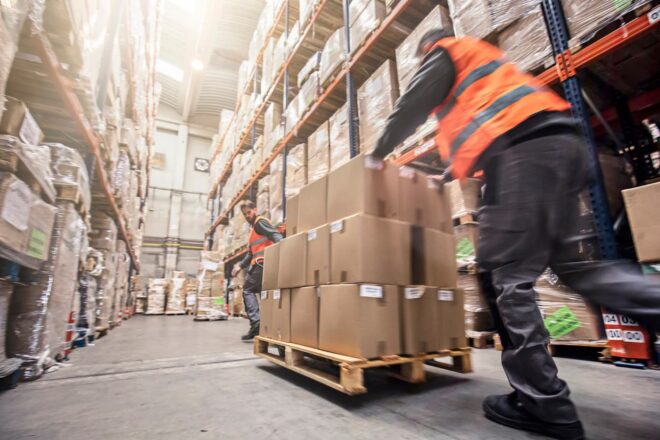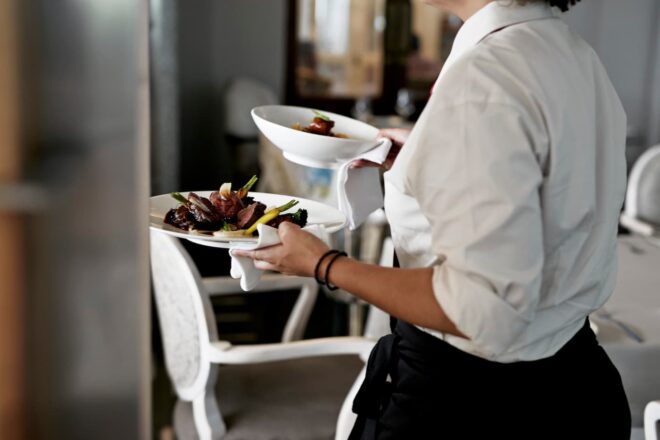How to determine and measure your restaurant KPIs
Editorial Team
8 min read
Key performance indicators (KPIs) are powerful tools that can help restaurant owners and managers objectively assess and measure the health of their business.
You may think your Friday night dinner rushes are a clear sign that all is well, but there’s no way to know for sure if a full house one night a week is translating into a profit unless you look at the numbers.
Here’s a look at some commonly used restaurant KPIs and a few suggestions for making these metrics work for you.
What are restaurant KPIs?
KPIs are data points used to measure your restaurant’s performance. Different KPIs provide insight into various business areas, quantifying everything from overall profitability to the efficacy of your marketing efforts. The more you capture and compare these metrics, the better equipped you’ll be to make decisions about day-to-day operations, advertising strategies, and much more.
So, how do you decide which restaurant key performance indicators are most important? That’s kind of a trick question. Some KPIs are almost universally useful, while others are chosen because they are necessary for goals specific to your restaurant.
To narrow your list and track only those KPIs that will be most beneficial to your business, consider the following:
- Start by listing your top business goals, and then determine which KPIs can help you achieve them.
- Track KPIs directly related to goals, as well as peripheral KPIs that could influence outcomes. For instance, if you’re interested in optimizing your labor costs, you might track what you’re spending on labor and sales numbers by server to see which employees have the biggest impact on your bottom line.
- Metrics for restaurants can vary depending on the type of dining establishment you operate as well as how many years you’ve been in business. For instance, a new cafe will benefit from tracking foot traffic and table turn time. A fine dining establishment with loyal customers, on the other hand, will likely need to track customer satisfaction.
- Reassess your KPI list regularly to see if the metrics you chose previously are still serving your best interests.
7 Restaurant metrics to track
All restaurant owners should track a core set of KPIs–whether you operate a franchise or a farm-to-table eatery. Here are the restaurant KPI examples you’re most likely to come across and use as you open and grow your business.
1. Sales & profit
Your sales numbers and profit margins aren’t just indicators of how much cash you’re bringing in, they’re also KPIs that can help paint a picture of your restaurant’s overall health and potential for long-term success.
There are several KPIs under the umbrella of sales and profit, such as your total sales, fixed costs, variable costs, labor costs, etc. Use POS sales tracking software to keep an eye on these numbers, so you always have an idea of whether you’re breaking even, turning a profit, or running in the red.
2. Food cost percentage
Food cost percentage, also sometimes referred to as cost of goods sold, is used to measure the amount you’re paying for ingredients compared to what you’re making when you sell your finalized dishes. Those two metrics – cost of ingredients and the price of your menu items – have to move in tandem to help protect your bottom line.
Learning how to calculate your restaurant food cost percentage is crucial, because it’s how you’ll keep an eye on ingredient quality while still making money.
3. Labor cost
Labor cost is one KPI for your restaurant business that you can’t afford to overlook. You should aim to keep your labor costs between 28 to 33% of your total revenue. It makes sense – the people who work for you are the livelihood of your business. Without cooks, servers, bussers, bartenders, hosts, managers, etc., it would be nearly impossible to run a restaurant. Labor costs don’t exist in a vacuum, though. Always consider them in concert with other metrics to understand how your staffing affects revenue and vice versa.
4. Prime cost
Prime cost combines two previously mentioned KPIs, adding your total labor costs and your cost of goods sold. You’re basically tallying up your two biggest expenditures – people and ingredients. This number is often expressed as a percentage of overall sales, with many restaurants aiming for a prime cost of 60%. That means the amount you’re spending on labor and goods should equal about 60% of what you’re bringing in from selling drinks and food.
5. Customer retention/repeat rate
How often are your customers coming back to see you? Do they visit once a week? Once a month? Just once, coming in for lunch or dinner and then never setting foot inside your establishment again? This KPI measures loyalty, so you can see how repeat business plays into revenue. To help keep customers returning, read this article on restaurant loyalty and rewards program ideas.
6. Employee turnover rate
Employee turnover is a part of the business, but it can also hurt your bottom line. Every time you lose an employee, you have to spend money to find and train a replacement. Additionally, until your new employee gets up to speed, you may not see a boost in revenue right away. If you lose too many employees in a short time or under less-than-ideal circumstances, this can decrease employee morale, which can result in lower quality services, and thus, less sales.
Tracking turnover can help you identify small problems before they become big ones, so you can help improve employee retention.
7. Marketing KPIs
Many restaurant KPIs are tied to daily operations, but key performance indicators can be used to inform and measure your marketing efforts, too. There are many marketing KPIs you might want to explore, expanding across digital and traditional marketing. Here are some common marketing KPIs:
- Social engagement: How many people are interacting with your posts on social media, including likes, shares, and comments?
- Website traffic: How many people are visiting your restaurant’s website? (There are some sub-KPIs here, too, such as how long people stay on your site, which pages they visit, etc.) This can help give you insight into how to optimize your website for search engines.
- ROI: This measures your return on investment, or how much money you’re making off a marketing campaign compared to how much you spent.
- Customer acquisition cost: How much are you spending to bring in each new guest?
Understanding the numbers attached to your marketing strategy can help you fine-tune future campaigns, turning your list of restaurant promotion ideas into potent opportunities for growth.
New restaurant performance metrics
New restaurants face a unique set of challenges compared to established ones. So, while many of the same KPIs are important, your initial restaurant performance metrics should particularly focus on building a customer base, refining your operations, and achieving profitability. In addition to the restaurant metrics listed above, consider keeping an eye on these KPIs for new restaurants.
1. Average ticket size
Average ticket size measures the average amount a customer spends per visit. It helps you to understand customer spending habits and price your menu more effectively.
2. Guest count, reservation and walk-in conversion rate, and table turnover rate
Start to build an understanding of the flow of orders your restaurant can expect over time. Tracking guest metrics such as guest count, walk-ins vs. reservations, and table turnover can help you determine when to staff up or down, prep the kitchen for a rush, or offer an incentive to minimize low periods.
Guest count measures the number of customers coming in each day, week, or month. This total can help you understand customer traffic patterns and identify peak times. Reservation and walk-in conversion rates measure the percentage of reservation requests or walk-in customers who result in actual dining experiences. These KPIs help evaluate the effectiveness of reservation systems and table management strategies. Lastly, table turnover rate tells you how many times a table is used in a given period. A healthy turnover rate indicates efficient seating utilization.
3. Inventory turnover ratio
This restaurant KPI tells you how quickly inventory is sold and replaced over a certain period. It helps you manage inventory levels and reduce food waste, especially as you test items on a new menu.
Track your restaurant KPIs with Clover
KPIs are like mile markers on a road trip. They tell you where you are and give you an idea of how far you have until you reach your destination. Choosing the right KPIs for your restaurant can help with everything from goal setting to performance reviews – all you have to do is use them. And, Clover offers a restaurant KPI dashboard that simplifies this process.
Interested in more help achieving your goals? Clover offers a wide range of business management and restaurant POS solutions designed to help FSRs and QSRs run as smoothly as possible. For more information, contact a Clover Business Consultant today.
SPEAK TO AN EXPERTRelated Posts
Overtime tax: How to calculate withholdings and track hours
Full Service Restaurants (FSR)
The 10 best non-slip restaurant work shoes for chefs and servers
Popular Topics
Stay In Touch
Sign up and learn more about Clover.
Thank you for your subscription!
Recent Stories
- Jewelry store supplies and equipment needed for opening day
- How small businesses can use employee discounts to retain staff
- Tips and tricks for opening an outdoor pop-up restaurant
Please share your contact information
to access our premium content.
Thank you for sharing your contact information.
Download Now





